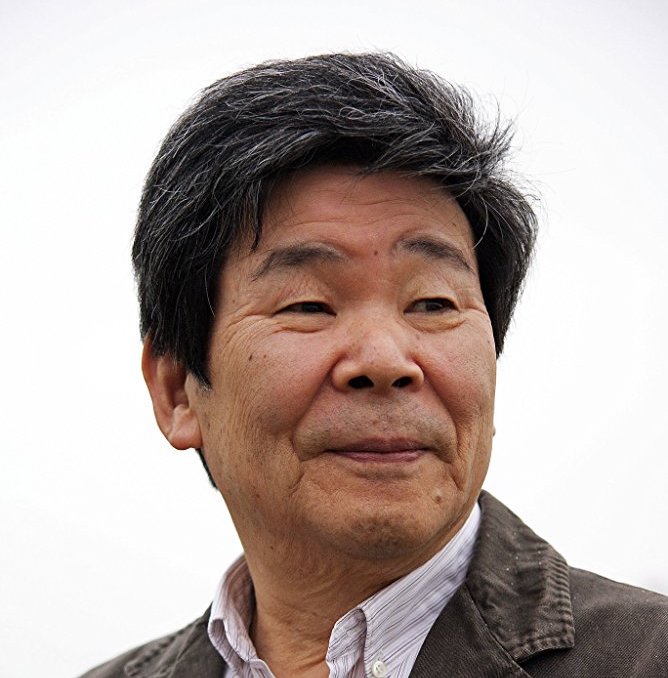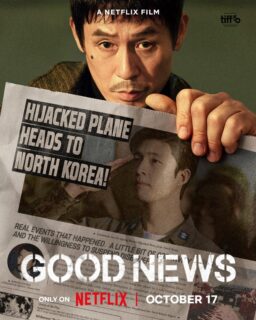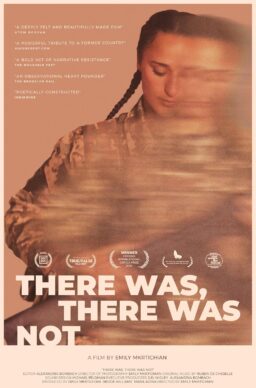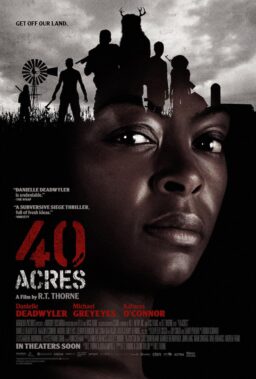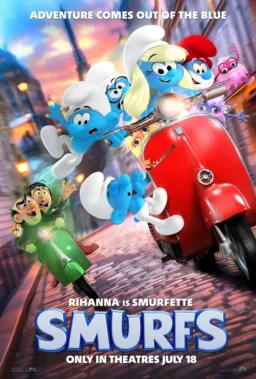Isao Takahata has died at the age of 82. And while that name alone may not mean much to the average moviegoer, the news will come as a devastating blow to animation fans. As a producer, he co-founded the legendary Studio Ghibli with the legendary Hayao Miyazaki and would go on to collaborate with him on a number of his internationally celebrated films as a producer. That alone would be enough to earn a place of prominence in the pantheon of animation. But Takahata also directed a number of films on his own that would go on to equal success throughout the world, including “Grave of the Fireflies” (1988), a film that Roger Ebert once said “belongs on any list of the greatest war movies ever made” and “The Tale of Princess Kaguya” (2013), which earned him an Oscar nomination for Best Animated Feature. Without his efforts and influence over the years, it is safe to say that the animated film industry would be a markedly different beast than it is now, and definitely a less interesting one to boot.
Takahata was born in Ujiyamada, Mie Prefecture, Japan on October 29, 1935 and attended the University of Tokyo, where he studied French literature and graduated in 1959. Having developed an interest in animation earlier after watching the French film “Le Roi et l’Oiseau,” he was convinced by a friend to take the entrance exam at Toei Animation and was hired as an assistant director. After working in a number of positions on the various television programs and films put out by the studio, Takahata got the chance to direct his first feature film, “Hols: Prince of the Sun” (1968). While he was not an animator himself, his production team included Yasuo Otsuka as Animation Director and, in his first major film work, Miyazaki as Scenic Designer and Key Animator. Alas, the resulting film was a commercial and led to Takahata’s demotion at the studio.
In 1971, Takahata, along with Miyazaki and fellow animator Yochi Kotabe, left Toei. After an attempt to produce an animated version of “Pippi Longstocking” fell through, he went to work in television for Nippon Animation for the next decade. In 1981, he joined Otsuka at Telecom Animation Film Co. and directed both an adaptation of the popular manga Jarinko Chie and a subsequent TV spinoff. However, while Takahata was hired to direct “Little Nemo,” which was intended to be a collaboration between Telecom and Disney Studios, the project fell apart and led to his resignation from the company. Takahata soon bounced back when he was invited by Miyazaki to join the new animation company that he was forming, Studio Ghibil. Although the first film to come from this collaboration, the Miyazaki-directed, Takahata-produced fantasy epic “Nausicaa of the Valley of the Wind” (1984) is usually considered a Studio Ghibli film, it was actually made before the new studio was formed and released by Toei. The film was a critical and commercial hit, now considered one of the greatest animated features of all time, and their next collaboration, “Castle in the Sky” (1986), the official Ghibli debut, proved to be just as successful.

In 1988, Takahata directed his first feature for Ghibli, “Grave of the Fireflies.” The result was one of the most powerful movies of any type to be released during the decade. Based on a short story by Akiyuki Nosaka, it tells the story of a young boy named Seita and his younger sister, Satsuko, as they struggle to survive on their own after their home in Kobe is destroyed during the ending days of World War II after an American aerial bombing attack that takes the life of their mother. For a while, they stay with an aunt but when her resentment towards them grows as the food rations shrink, they take off once again and make a home of sorts for themselves in a hillside cave. There, Seita tries to both find food for the two of them and answer Satsuko’s increasingly difficult questions about what is going on and where their parents are.
Needless to say, the story does not end happily—the film is actually structured as a flashback by Seita’s spirit—and for American audiences raised on the belief that all animated films were inherently made for all ages, to see that art form service such a sad and wrenching of a narrative as can be imagined must have come as a shock. However, the use of animation to tell this particularly store proves to be an inspired choice. The stylization of the visuals means that moviegoers are free to remove themselves from the overtly and sometimes overwhelming trappings of this kind of filmmaking—the sets, special effects and booming action sequences—in order to put the focus more directly on the emotional underpinnings of the story. (Both Takahata and Nosaka survived air raids as children and you can feel the pain, confusion and wonder that they must have themselves felt throughout.) At the same time, there are moments of extraordinary visual beauty to be had here as well, the most famous of which is a lovely set of images when the siblings collect and release fireflies in their cave in order to illuminate the place. Yes, it builds to one of the saddest endings of any film that you will ever see. But you come away from it feeling a sense of elation at having witnessed the sight, however grim, of a film that is as perfectly done as one could hope for it to be.

While Takahata’s subsequent directorial efforts would not match the grimness of “Grave of the Fireflies,” they would nevertheless challenge most conventional notions of the kind of storytelling that one could do in the animation genre. “Only Yesterday” (1991), for example, was a gentle drama centered around Taeko, a 27-year-old unmarried woman who takes a few days off from her life in the city to go out to the country to help her brother-in-law’s family with a harvest and finds herself flashing back to memories of her own childhood in 1966. Again, this would seem to be an odd choice of subject matter for an animated film. But Takahata justifies it with an ingenious stylistic gambit in which the modern sequences and characters are rendered in an atypically realistic manner, while her childhood is presented in a look that more closely adheres to the conventions of anime.
Between that and the touching storytelling, in which memories of Taeko’s not-always-carefree coming-of-age are juxtaposed with her concerns about what she has become, the end result is another striking and fascinating work that would go on to be enormously popular in Japan (it was the country’s biggest homegrown hit of that year) and hailed as a masterpiece by critics. About the only place it wasn’t celebrated was the United States of America because, aside from a couple of festival screenings and an airing on Turner Movie Classics in 2006, it was never released there. The story goes that Disney, which had the distribution rights in America to Ghibli’s films for years, objected to a scene involving Taeko menstruating and since they could not simply cut it out due to the details of their contract with Ghibli, they instead elected to simply not screen it at all. (Happily, distributor GKIDS got the rights to Ghibil’s output in 2015 and released it the next year, with a new dub featuring the voices of Daisy Ridley and Dev Patel, to much rejoicing.)
Based on a story idea from Miyazaki, “Pom Poko” (1994) is a somewhat more conventional animated fantasy in which a group of raccoon dogs with magical abilities, such as being able to shape-shift, try to prevent their forest home from being destroyed in the name of urban development. Although quite funny in spots, this is not merely an empty-headed kiddie film by any stretch of the imagination—it gets fairly serious at times. It is safe to say that an ordinary children’s film would have composed the main characters so that their testicles did not play such a key part in both the dramatic and visual design. “My Neighbors, The Yamadas” (1999) was another interesting blend of comedy and drama that, through a series of vignettes covering the gamut from the silly to the serious involving a typical middle-class Tokyo family that will ring true with viewers of all ages and nationalities. In 2003, he contributed a brief bit of animation to “Winter Days,” a collection of pieces inspired by winter days in Japan.

Takahata’s final directorial effort was “The Tale of the Princess Kaguya” (2013), an inspired fantasy that begins when an elderly couple find a tiny girl inside a bamboo shoot and raise her as their own. She grows in stature and beauty and virtually everyone who encounters her falls in love with her. The sons of five important families all propose marriage to her but when she orders them to finds proper gifts for her, they fail. However, when the Emperor of Japan himself turns up with a proposal of his own, it leads to a set of circumstances that force Kaguya to finally come to terms with herself and her parents about who she really is. The film is pretty extraordinary in all areas—visually stunning, dramatically powerful and deeply moving without ever becoming cloying or manipulative—and is easily Takahata’s best since “Grave of the Fireflies” and one of the finest of all Studio Ghibli films. It would go on to win numerous awards throughout the world and even received an Oscar nomination for Best Animated Feature, though it would lose to the Disney behemoth “Big Hero 6.”
Takahata’s final film work found him serving as producer of “The Red Turtle” (2016), an innovative fantasy about the interesting relationship that develops between a shipwrecked sailor and a mysterious red turtle who appears on the small tropical island where he washes up. If I tell you what happens next, you’ll write it off as a joke, but it is anything but that. This film would also go on to receive accolades and an Oscar nomination as well. There were rumors he may have been working on something new, but he had reportedly been in poor health recently and developed a heart condition last year.
Of course, when the subject of great Japanese animated filmmakers comes up, Miyazaki is the name that most people are going to gradually gravitate towards, in the same way that people in America will instantly conjure up Disney. However, Isao Takahata was no mere Saleri who was cursed to constantly stand in the shadow of greatness. He was a master of the art of animation as well and his contributions to the genre cannot possibly be overstated. The best way to prove this, of course, is to go out and check out his movies for yourself. Not only are his Ghibli productions all currently available via beautifully produced DVDs and Blu-rays, American audiences will have a chance to see “Pom Poko” and “Grave of the Fireflies” on the big screen, where they truly belong, as part of a monthly program of Ghibli films appearing in theaters across the country this summer—the former screens June 17, 18 and 20 while the latter plays on August 12, 13 and 15. There can be no greater tribute to Takahata than to go and see these films and experience the magic that he created so effortlessly. That said, if you see “Grave of the Fireflies,” just remember to bring lots and lots of tissues with you.

